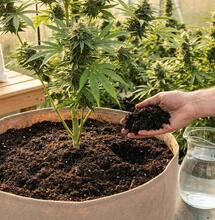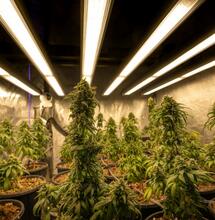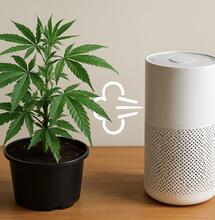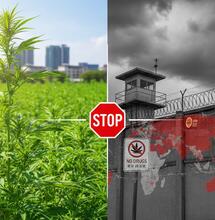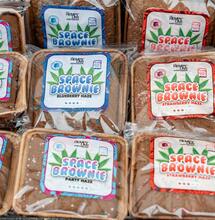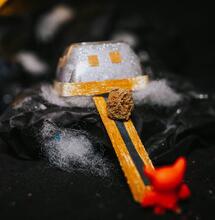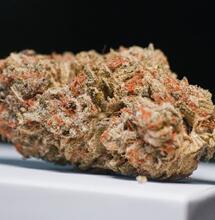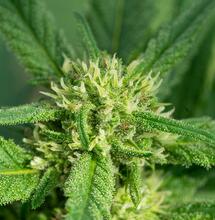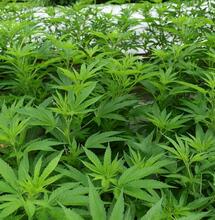High-THC Cannabis Strains: The Ultimate Guide to Growing Jelly Donutz Buds
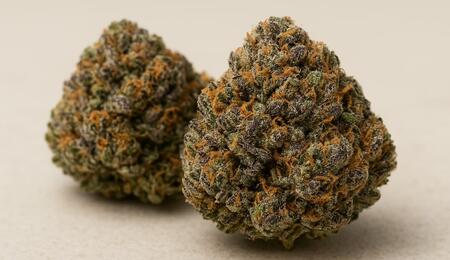
The cannabis industry is undergoing a potency revolution. What was once considered “high-grade” THC has now become the baseline, with top-tier strains regularly breaking the 30% mark. This quest for more potency is driven by breeders who are mastering the art of genetic selection, crossing elite lineages to create next-generation cultivars that boast incredible resin production and complex terpene profiles. One standout example is the Jelly Donutz cannabis strain, a relatively new arrival on the market. Here’s a quick breakdown of its genetics and an expert guide on how to grow it.
Among the current kings of high-THC cannabis, the Jelly Donutz strain stands out. Bred by the renowned Humboldt Seed Company, this cultivar has quickly become a grower’s favorite, offering not just a knockout potency that regularly tests between 30-35% THC, but also a sweet, dessert-like aroma that lives up to its name. However, cultivating such potent genetics requires a master’s touch. To coax a plant to express its maximum genetic potential—that shimmering 35% THC—you must provide an environment of near absolute perfection.
This ultimate cultivation guide will walk you through the essential steps, from setting up your grow room to the crucial timing of your harvest, to ensure your Jelly Donutz cannabis buds are as potent, dense, and trichome-covered as the rumors claim. Whether you are a commercial grower seeking massive yields or a home enthusiast chasing top-shelf Marijuana, optimizing your process for high-THC genetics is the key to success.
What Is the Jelly Donutz Strain? Genetics and Potency
Understanding the pedigree of your plant is the first step toward successful cultivation. Elite genetics like Jelly Donutz are bred for specific traits—high resin content, quick flowering, and resistance—which guide your grow strategy.
The Jelly Donutz Lineage: Hella Jelly x White Runtz (60% Sativa / 40% Indica)
The exceptional performance of the Jelly Donutz cannabis strain is the result of a deliberate cross of two powerhouses: Hella Jelly (formerly Jelly Rancher) and White Runtz.
- Hella Jelly is known for its fast-flowering nature, hybrid vigor, and heavy yields, contributing a workhorse structure to the new genetics.
- White Runtz, a phenotype of the mega-popular Runtz strain (Gelato x Zkittlez), brings the high resin production, extreme potency, and visually striking colors (purple, green, and pink hues) that give Jelly Donutz its remarkable “bag appeal.”
The resulting hybrid leans slightly Sativa-dominant (approximately 60% Sativa, 40% Indica). This gives the plant an energetic, upright growth structure and an upbeat, cerebral high, while the Indica side ensures dense, chunky buds and a manageable flowering time. The flavor profile is complex, blending notes of sweet caramel and cotton candy with a pungent, gaseous fuel undertone, creating a truly unique smoking experience.
The 35% THC Factor: Why These Marijuana Strains Are Different
Achieving a tested THC level of 35% is not just about genetics; it’s about environmental activation. While the genetic code provides the potential for high potency, the grower must trigger the plant’s natural defense mechanisms that drive cannabinoid production.
Marijuana plants produce THC—the primary psychoactive compound—as a defense against UV radiation and pests. By optimizing environmental factors, particularly light intensity and spectrum, you can signal to the plant that it needs to produce more resin (trichomes) for protection, directly leading to higher THC content. Cannabis strains such as Jelly Donutz are hyper-responsive to these triggers, making precise environmental control for growing more critical than ever before.
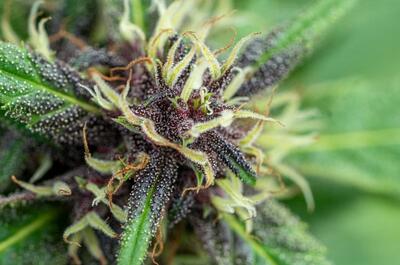
Pre-Grow Checklist: Setting up Your High-THC Cultivation Space
Before dropping your Jelly Donutz cannabis seeds, ensure your cultivation environment is packed with everything that is needed for a successful operation. These steps are non-negotiable for maximizing THC and yield.
Optimal Lighting for Maximum Buds (LED vs. HPS)
Nothing fuels THC like strong light. And with a high-potential weed strain like Jelly Donutz, dialing in high-intensity lighting is more than recommended.
- Intensity: Aim for a high Photosynthetic Photon Flux Density (PPFD). During the peak flowering stage, you want to push your plants to 1000 µmol/m²/s or higher, especially if supplementing with CO2.
- LED Advantage: Full-spectrum LED fixtures are the modern standard. They are highly efficient and, crucially, offer spectrum control. Many modern LEDs include dedicated UV-A and UV-B diodes. Adding a dose of UV-B light (290–320 nm) during the final 2–3 weeks of flowering has been shown to boost trichome production and significantly increase the THC percentage of your finished buds.
- Distance: Position your powerful lights at the optimal distance—usually 12-24 inches from the canopy—to deliver maximum intensity without causing light or heat stress.
Environment Control: Temperature and Humidity for Cannabis Plants
Proper environmental control minimizes stress and allows the cannabis plant to focus all its energy on flower development. Here are the desirable grow room settings when cultivating Jelly Donutz marijuana plants.
Vegetative Growth Stage:
- Daytime Temp: 75°F - 80°F (24°C - 27°C)
- Relative Humidity (RH): 60% - 70%
- Light Cycle: 18/6
- Recommended Action: High heat/humidity for rapid growth.
Early Flower Stage:
- Daytime Temp: 72°F - 77°F (22°C - 25°C)
- Relative Humidity (RH): 50% - 60%
- Light Cycle: Switch to 12/12
- Recommended Action: Maintain vigor, start hardening the plant.
Late Flower Stage:
- Daytime Temp: 68°F - 75°F (20°C - 24°C)
- Relative Humidity (RH): 35% - 45%
- Crucial for THC: Lower temperatures and humidity in the last 2-3 weeks signal stress, which stimulates the plant to produce more resin and brings out the beautiful purple hues in the Jelly Donutz weed strain.
Consistent with cultivation practice, nighttime temperatures should be slightly lower than daytime temperatures throughout the entire growth process, and humidity should be adjusted accordingly, to support healthy development and maximize yields.
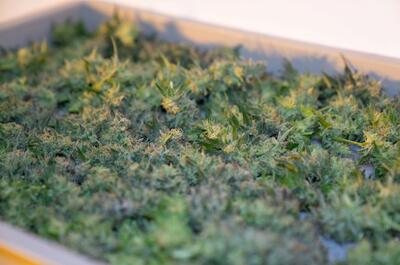
Expert Cultivation Guide: From Seed to Maximum Potency
Germination & Vegetative Growth: Plant Training (LST) for Jelly Donutz Cannabis
The goal of the vegetative stage is to build a strong, productive plant structure that can support the heavy Jelly Donutz buds.
- Soil/Medium: Jelly Donutz is resilient and performs well in both soil (Ocean Forest is a popular choice) and hydroponic/coco setups. Maintain a consistent, well-draining medium.
- Nutrients (Veg): Focus on a Nitrogen (N)-rich formula for lush leaf and stem growth. Maintain an optimal pH range of 6.0-6.5 in soil or 5.8-6.2 in hydro/coco.
- Low Stress Training (LST): As Jelly Donutz cannabis plants grow tall and vertical (Sativa-dominant trait), LST is essential. Gently bend and tie down the main stem and branches during the veg phase to create a wide, flat canopy. This ensures that every single potential bud site receives maximum light, resulting in multiple large colas rather than one single main cola.
Flowering Stage Nutrients: Boosting Resin and Bud Density (PK-boosters)
The transition to flowering (initiated by switching to a 12/12 light cycle for feminized, photoperiod seeds) is when your nutrient regimen must shift dramatically.
- Reduce Nitrogen (N): Excess nitrogen in the flowering stage inhibits formation of flower and can create a harsh smoke. Gradually decrease N once flowering begins.
- Increase Phosphorus (P) and Potassium (K): P and K are the primary macronutrients for flower development. P is essential for energy transfer (photosynthesis), and K is critical for water uptake and overall robustness.
- Use Bloom Boosters: If you’re chasing top-tier THC potential, a PK-heavy bloom booster is a popular go-to among experienced growers. These additives, often containing high concentrations of phosphate and potash, force the plant to increase the size and density of its buds, maximizing final yield and potency.
- Cal/Mag Supplementation: High-intensity lighting and heavy feeding can deplete Calcium and Magnesium. Ensure you supplement with Cal/Mag, particularly when using a soft water source or coco coir.
Harvesting High-THC Marijuana: Timing is Everything
The final two weeks of your cultivation cycle are arguably the most critical for maximizing THC and preserving the exquisite flavor of Jelly Donutz cannabis buds.
The Trichome Test: When to Harvest for Peak THC
Harvesting at the precise moment of peak cannabinoid production is the final key to achieving maximum THC content. This is determined by observing the microscopic resin glands—the trichomes—using a jeweler’s loupe or a digital microscope.
- Clear Trichomes: The resin is still immature and is producing precursors, but not full THC. Do not harvest.
- Milky/Opaque Trichomes: This signals peak THC production. The cannabinoids are at their highest concentration. This is the ideal harvest window for maximum potency.
- Amber Trichomes: The THC has begun to degrade into Cannabinol (CBN), which causes a heavier, more narcotic “couch-lock” effect.
For a potent, energetic high (as intended by the Sativa-dominant Jelly Donutz), harvest when approximately 70-80% of the trichomes are milky/opaque and the remaining 20-30% are clear. If you prefer a heavier, more relaxing effect, wait until 10-20% of the trichomes have turned amber.
Drying and Curing: Preserving Jelly Donutz Cannabis Quality and Terpenes
You have successfully grown a high-THC plant, but a poor post-harvest process can ruin months of work. The final step is preserving the terpene-rich aroma and quality of the Marijuana buds.
- Flushing (The Final Week): In the final 7-10 days before harvest, switch from a full nutrient solution to pure, pH-balanced water. This process forces the plant to use up stored nutrients, which results in cleaner, smoother-smoking buds that better express the sweet, fuel-forward flavor of the Jelly Donutz cannabis strain.
- Drying (Slow and Controlled): Hang whole branches or individual buds in a dark room with a consistent environment: 60°F (15.5°C) and 60% Relative Humidity (RH). A slow dry (7–14 days) is essential to lock in terpenes and moisture.
- Curing (The Final Polish): Once the stems snap (indicating dryness), trim your buds and place them into airtight glass jars, filling them about three-quarters full. “Burp” the jars daily for the first two weeks (opening the lid for a few minutes) to release built-up moisture and prevent mold. Curing for a minimum of 4–6 weeks should significantly improve the flavor, aroma, and smoothness of your final product.

Frequently Asked Questions about Jelly Donutz Cannabis
Q: Is the Jelly Donutz cannabis strain good for beginners?
A: Yes, despite its extraordinarily high potency, the Jelly Donutz Cannabis strain is often cited for its resilience and vigorous growth, which it inherited from its Hella Jelly parent. It shows commendable resistance to common problems like gray mold and powdery mildew, making it a good choice for new growers who focus on providing stable, basic needs for the plant. Its relatively short flowering time also reduces the window for potential mistakes.
Q: What is the flowering time for Jelly Donutz Buds?
A: The photoperiod (feminized) version of the Jelly Donutz strain is known for its quick finish. When grown indoors, the typical flowering time is exceptionally fast, around 55 days (approximately 7 to 8 weeks) after switching the light cycle to 12/12. Outdoor growers can expect a harvest window around late September to early October, which is a nice advantage in regions with short growing seasons or early fall rains.
Q: How can I increase the THC level in my Marijuana Buds?
A: To maximize the THC percentage in your Marijuana Buds, focus on three core areas:
- Light Intensity & UV: Provide maximum light (high PPFD) during flowering. If possible, introduce supplemental UV-B lighting for the final two to three weeks to stress the plant into increasing resin production.
- Late-Stage Stress: Slightly lower the temperature (to 68°F/20°C) and the relative humidity (to 35-40% RH) during the final weeks of flowering.
- Nutrient Manipulation: Cut back on Nitrogen and heavily supplement with PK-boosters (Phosphorus and Potassium) from weeks 3-6 of the flowering cycle to push the plant to bulk up its resin-heavy buds.
Final Words
The pursuit of High-THC Cannabis Strains is an exciting journey for any grow enthusiast, and Jelly Donutz is a testament to how refined and sophisticated today’s cannabis genetics can be. By implementing the expert techniques outlined in this guide—optimizing your environment with high-intensity light, fine-tuning your nutrient delivery, and mastering the crucial harvest window—you can unlock the full 35% THC potential of this exceptional cultivar.
Growing high-potency buds takes patience, precision, and real dedication. With the right cultivation approach, Jelly Donutz can reward you with dense, colorful, and incredibly vibrant cannabis flowers that highlight what modern breeding and next-generation seeds are capable of.
Read more from Soft Secrets:
